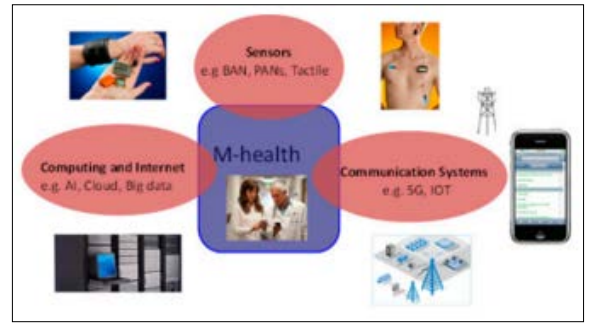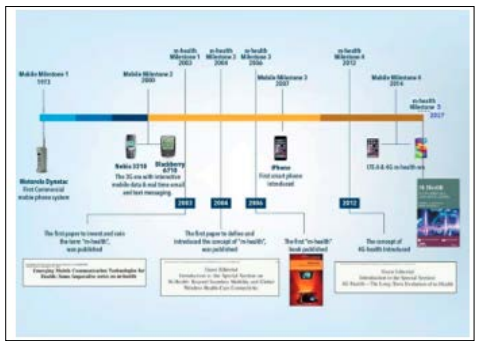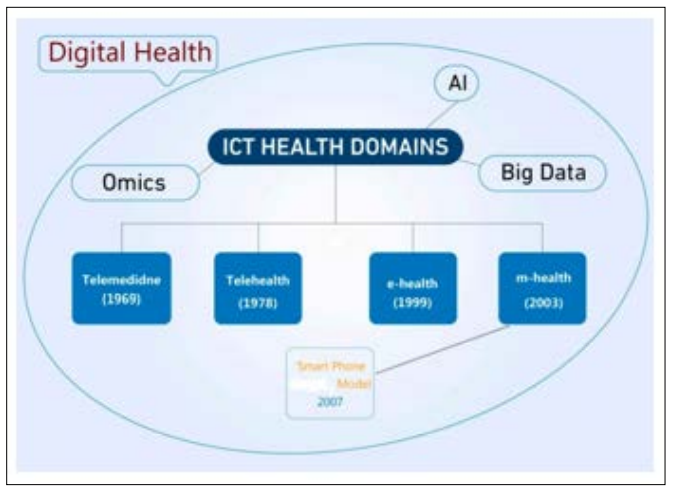Author(s): <p>Satwik Mamidi</p>
Healthcare system faces multiple challenges, especially in managing chronic conditions like diabetes and hypertension. The requirement of continuous monitoring and care contributes to the development of the challenges. Mobile health apps have the potential to address these obstacles as they enable realtime data monitoring and provides personalized health guidance. These apps have the potential to improve patient adherence to treatment, reduce hospital visits, and enhance overall health outcomes.
This research explores how mobile health apps improve chronic disease management by enabling real-time monitoring and personalized care. The article explores various benefits of mHealth that experienced by healthcare providers and the patients, including analysis of real-time data monitoring and adherence to medications by the patients.
Chronic diseases are defined as enduring health conditions requiring continuous medical attention, including diabetes and hypertension. Further, it also requires limited activities and adjustments in the living process. The World Health Organization (WHO) reported that diseases like diabetes and hypertension are the leading causes of death worldwide, leading to fatalities of over 70% of patients [1]. An efficient management of these conditions involves continual monitoring, regular treatment, and compliance with medical advices by the patients [2]. However, many individuals face difficulties in the ensuring consistency in handling their illnesses due to limited access to healthcare facilities, minimal interaction with healthcare professionals, and a lack of understanding about the progression of their condition [3]. The use of mobile health (mHealth) apps has provided creative ways to tackle these discrepancies. The mHealth apps have different pillars, including sensors, communication systems, and computing and internet [4].
This article aims to address challenges related to chronic conditions through the use of mHealth as the solution. It further highlights the implementation process and expected results of the implementation.

Figure 1: Key Pillars of Mobile Health Applications [5].
Chronic diseases force patients to depend on continuous check-ups to track their health records or status. This traditional method of regular checkups often results in gaps between the appointments due to failure of maintaining regularity in their check-up procedures. The regular check-ups makes difficult to monitor the progression of the disease [2]. For instance, people with diabetes primarily measures their blood sugar levels while visiting the healthcare professionals. However, the failure to note daily fluctuations in the blood sugar level often become a challenging part. Further, individuals with high blood pressure often fail in maintaining consistency in checking their blood pressure at home [3]. These gaps can lead to poorly managed symptoms, complications, and more frequent hospital visits.
The advent of mHealth apps offers an alternative approach by providing a continuous monitoring system that captures patients’ health data in real-time. There are several applications such as MySugr, GlucoMe, and Omron HeartAdvisor, which transformed the management of diabetes and hypertension [6]. These apps allow patients to input their blood glucose or blood pressure readings, receive feedback, and adjust their treatment plan in real-time based on the insights provided [6]. These apps enabled the patients to investigate their health details and actively participate in their personal treatment programs.

Figure 2: The Evolution and key Milestones of Mobile Health (2003–2021) [5].
The management of chronic illnesses like diabetes and hypertension is exposed to several challenges. Therefore, the main problem aimed to be address is the difficulty that patients face while monitoring and management of the chronic conditions like diabetes and hypertension. Traditional healthcare systems often fails to provide continuous monitoring, which leads to inadequate disease management between medical appointments [5]. Further, the complexity and lack of timely feedback from the healthcare providers make the patients’ ability to adherence with the prescribed treatments difficult [7]. The traditional healthcare systems are facing hardship to handle the increasing cases of chronic disease, which makes the maintenance of personalized and long-term care challenging.
Therefore, this research article focuses on the issue of real-time monitoring and management of chronic conditions. There is an immediate requirement for a solution that not only allows patients to track their health data but also enables healthcare providers to intervene swiftly and provide personalized care.

Figure 3: A Digital Health Representation in Conjunction with the Canonical ICT for the Healthcare Domain [5].
Development of mobile health applications that track patient data in real-time and provide actionable health insights is the key solution proposed in this article. The development and incorporation of mobile health applications that specifically target the management of chronic conditions like diabetes and hypertension [4]. These applications utilize the features of smartphones and digital health technology to instantly gather patient data, analyze trends, and provide valuable recommendations.
Real-Time Data Tracking: The autorotated device can be used connectedly or manually enter their blood pressure and sugar readings [8]. The software creates a continuous health record by recording this data.
Personalized Insights: The app provides tailored recommendations and reminders of medication [8]. This exercise can improve the patients’ medical records.
Remote Monitoring: These applications provide remote monitoring to medical practitioners, which requires modifications to treatment plans [9]. It offers guidance by giving remote access to the patient’s data to the healthcare professionals.
Patient Education: Mobile health apps offers its users required knowledge and skills manage their symptoms [9]. It also provides understanding of their diseases and encourage adherence to their treatment plans.
The systematic approach of implementing the mobile health applications to guarantee benefits to the patients and the healthcare professionals. Some of the crucial steps of the implementation are as follows:
Needs Assessment: The assessment of the needs is the first stage of the implementation. Conducting surveys and focus groups to ascertaining the needs of patients with chronic conditions and identifying available gaps in the current management strategies of patients’ data [10].
Software Development: Collaboration with patients, healthcare providers, and app developers for designing an intuitive and user-friendly app interface is important [11]. The verification of the compatibility of the applications with wearable technology, including glucose monitors and smartwatches is necessary [10]. Data analysis: Examination of the ability of the apps to improve patient outcomes by analyzing the health data will be an important stage of the implementation [11]. Regular tracking of metrics like blood pressure control, treatment adherence, and blood glucose stability will be an important part of data analysis.
Pilot Testing: Pilot testing is an important part of the implementation process. Pilot testing by including 15 patients of different age groups will enable the opportunity to collect their feedback and improve the implementation successfully.
Scale-up and Integration: Improvement of the app continuously is an important part of keeping ensuring consistency. The medical professionals must be trained on the use of the app to track patients’ development from a distance and incorporate it into their daily practices [12].

Figure 4: Stages for Processing Health Data [13].
The following advantages are expected from the implementation of mobile health apps to manage chronic illnesses:
Improved Health Outcomes: The continuous real-time monitoring through the use of the mobile health apps will offer patients to be able to better manage patients’ conditions [12]. It will reduce complications and improve overall health.
Enhanced Patient Engagement: Mobile health apps promote better adherence to treatment structures and lifestyle modifications by giving patients [10]. It offers strong control over the health information or records as well.
Reduced Healthcare Costs: The utilization of mHealth apps will prevent complications and decrease the need for emergency care or hospital stays [10]. The long-term costs associated with the management of the chronic diseases will be reduced.
Better Communication Between Patients and Physicians: The remote data sharing will improve communication between patients and the healthcare providers [7]. These apps will enable more prompt and customized care for the patients.
Digital Literacy is an important part of ensuring successful integration of the technology or system. The digital literacy among the older generation is significantly low, which makes the adoption of such technologies difficult. Therefore, there is a significant need to offer training to the patients for ensuring successful adoption of the technology.
In conclusion, the management process of chronic diseases like diabetes and hypertension can be enhanced by utilizing mobile health applications. The features of these applications, including real-time data tracking, personalized health insights, and improved communication between the patients and the healthcare providers make the solutions possible. Mobile health therefore improve the management of chronic diseases. In contrast, the successful implementation impeded by various challenges, including lack of digital literacy among patients, data privacy issues, and system integration difficulties. However, the successful implementation of mobile health apps have the ability to improve the treatment of chronic diseases resulting in better patient outcomes and reduced medical costs.
